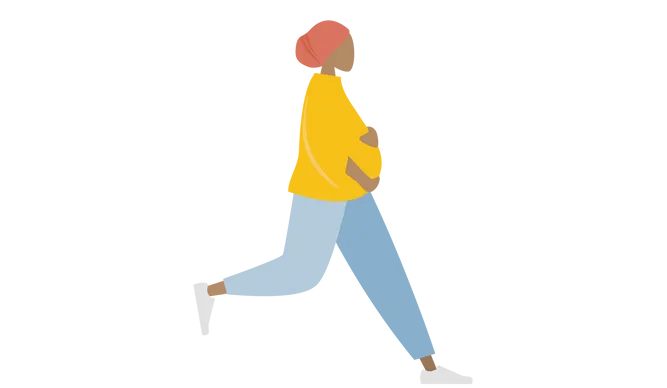Preparing for Labor & Delivery with Pelvic Floor Physical Therapy
Many people don’t realize that pelvic floor physical therapy (PFPT) isn't just for postpartum recovery - it's also an essential tool for birth prep. Here are some key ways PFPT can help you have a smoother, more comfortable birthing experience:
Reducing the Risk of Injury
PFPT can help strengthen and prepare the pelvic floor muscles, which play a crucial role during childbirth. More coordinated (meaning, having the ability to effectively lengthen and relax) muscles can better support the birthing process, potentially reducing the risk of perineal tears and other birth-related injuries.
Speeding Up Postpartum Recovery
By preparing the pelvic floor muscles before delivery, you can set the stage for a quicker recovery post-birth. Well-conditioned muscles tend to heal faster and more efficiently, helping you get back to your routine sooner.
Practicing Relaxation Techniques
Labor and delivery can be intense and stressful, but learning relaxation techniques through PFPT can help manage pain and anxiety. Techniques such as deep breathing, visualization, and guided relaxation can make the experience more manageable and less daunting.
Exploring Different Labor Positions
A pelvic floor physical therapist can guide you through various labor positions that can make the birthing process more comfortable and effective. Knowing these positions ahead of time allows you to try them out and find what works best for you during labor. For example, many people assume that if you get an epidural, then your only choice is to labor and deliver your baby on your back, but that’s not necessarily the case. With the help of your birthing partner, OB team, and/or some equipment, you can try out several different positions to see what feels best for you.
Tools and Resources:
We highly recommend The Birth Deck (affiliate link), a set of 50 flashcards with simple, illustrated pain management tips for supporting a person in labor. It’s an easy, non-intimidating way to prep for your own delivery or to better support a loved one through theirs. There’s also a free app.
You go to so many appointments throughout your pregnancy, but once your little one is here, most of us just get a single six-week check-in (if that)! Who can you turn to in the meantime? We can help! Check out the Healthy Pelvis Project’s "Prepare for Early Postpartum" mini-course, which shares information about what to expect in the first 48 hours post-delivery and the following six weeks. We cover bleeding, bowel movements, hygiene, asking for help, product recommendations, and more…all in short and sweet, easy-to-digest modules. You can also purchase the full “Postpartum Essentials” course, which makes a great gift for yourself, your partner, or a baby shower.
Pelvic floor physical therapy is a valuable resource for expectant parents. Knowledge is power, and we can help you feel prepared and confident about what to expect, showing you how many things are within your control. By getting your body and mind ready for labor and delivery, you can increase your chances of a smoother, more comfortable birth experience.
If you’re interested in learning more or scheduling a birth prep appointment, please reach out:
Email: info@bostonpelvicpt.com
Call or text: (813) 303-0416
Schedule a visit online: bostonpelvicpt.janeapp.com
We’re here to support you every step of the way!

